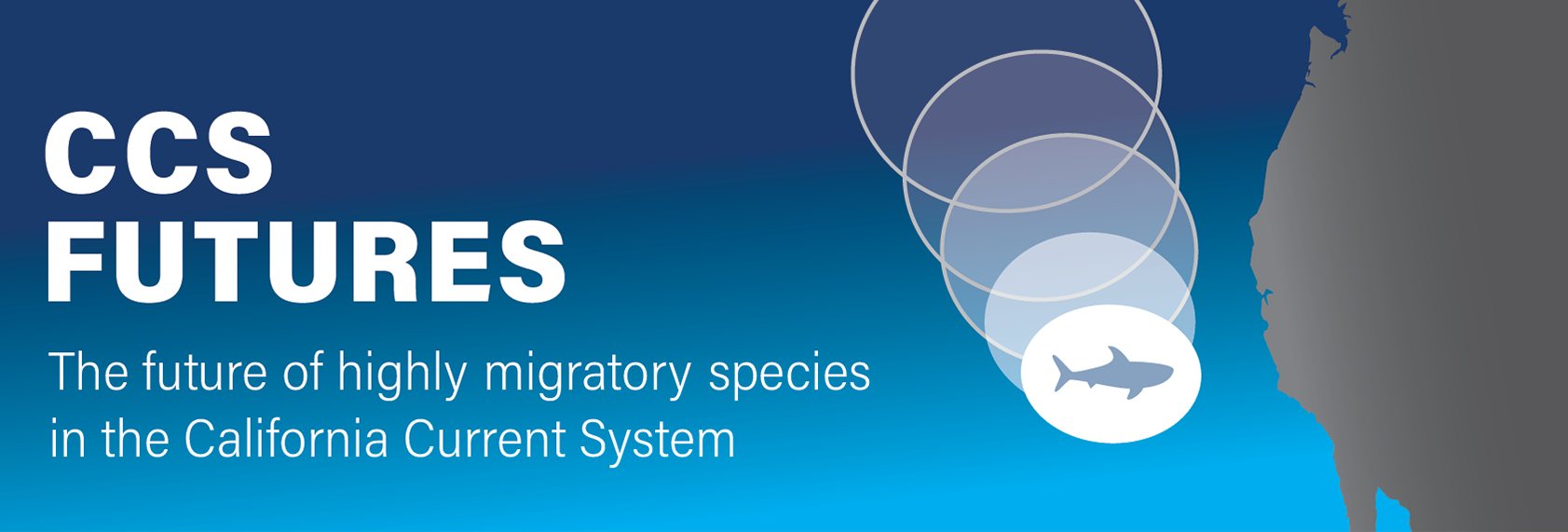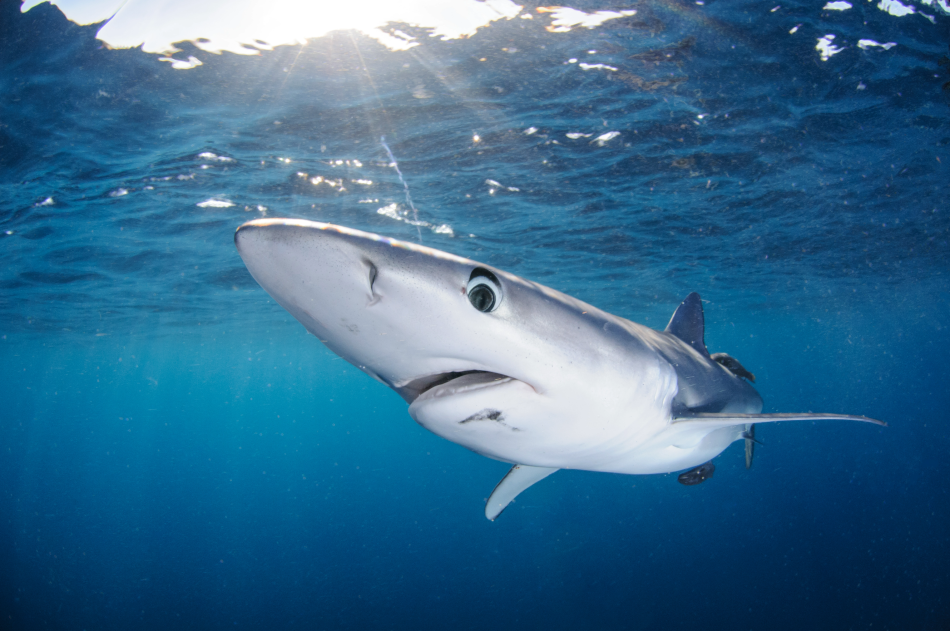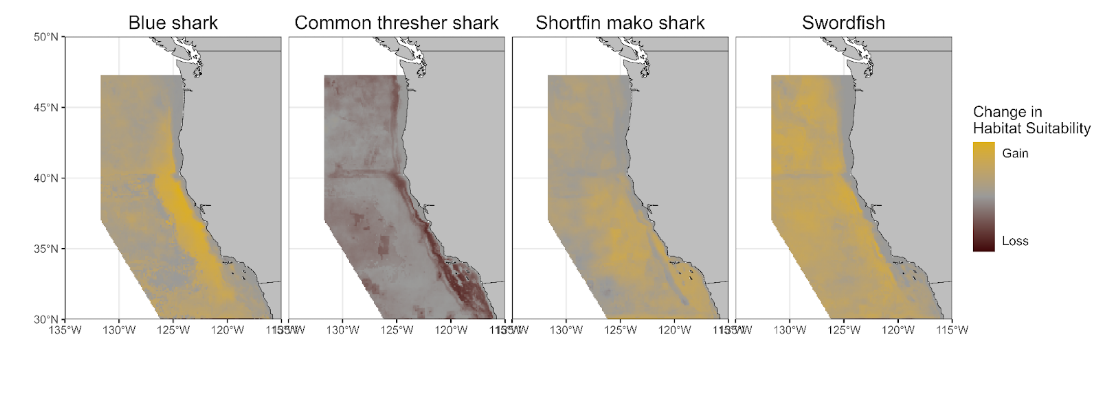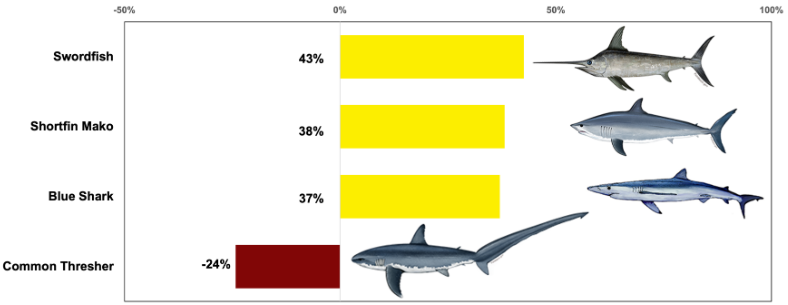FaCeT
CCS Futures
The California Current System (CCS) is a dynamic and productive ecosystem and a global hotspot for marine species including sea turtles, sharks, and marine mammals. The CCS also provides important habitat for many commercially important highly migratory species such as swordfish and tunas.
As with other ocean regions, changing oceanographic conditions in the CCS are likely to have substantial ecological and economic impacts. Understanding both these changes and their effects on commercially important highly migratory species is an important focus area of FaCeT's research.

Changing Species Habitats and Distributions

Using historical data and downscaled climate models from Pozo Buil et al. (2021), FaCeT has developed models to predict how habitat suitability and distributions for key CCS fishery species will respond to changing ocean conditions. These species include the blue shark, shortfin mako, common thresher, and swordfish.
Winners and Losers
FaCeT's model results allow us to compare across both time and species to identify which species are likely to gain habitat (winners) or lose habitat (losers) as a function of expected climate change. These changes inform fishery management and conservation efforts.
 Open the image full screen.
Open the image full screen.Lessons Learned
How CCS species will be impacted by climate change
The CCS, like many other biodiverse and productive ocean areas, will continue to experience climate change impacts. Using climate and species distribution models, we can monitor and manage CCS fisheries to advance climate resilience and readiness.
Based on current projections, we expect core habitat area to increase for swordfish, blue shark, and mako shark, which may impact CCS fisheries. The CCS may also experience an increase in some shark distributions, which could require more effective bycatch mitigation measures to reduce unwanted shark interactions.
For more information on model methods and results, visit Lezama-Ochoa et al. (2023).
Habitat gained and lost
 Open the image full screen.
Open the image full screen.



